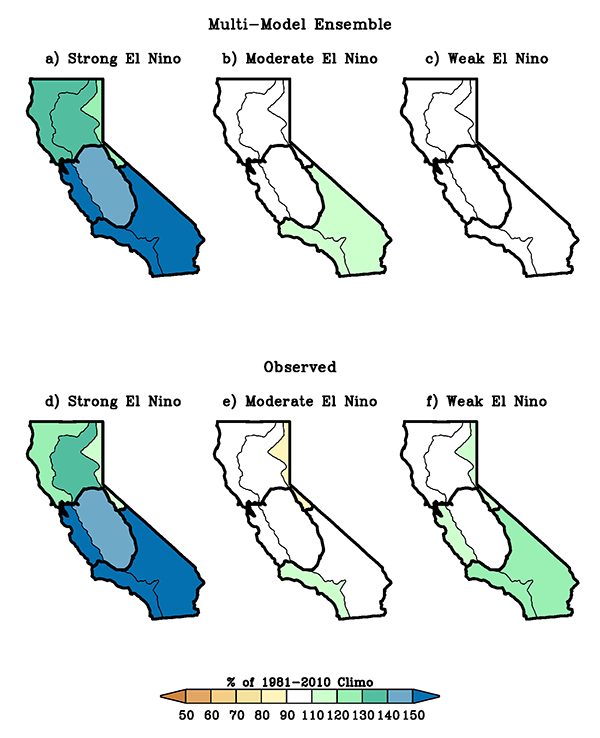Study confirms link between El Niño intensity and precipitation in California

Dry and thirsty...but for how much longer? The multiyear drought in California has drained reservoirs, ruined crops, stressed ecosystems, and exasperated many. There is hope that the current El Niño could provide much-needed relief, but the amount of rain and snowfall in the region during such events in the past has varied widely. A new study, published this month in Geophysical Research Letters, concludes that if current conditions continue, Californians can likely expect an especially wet winter.
"We found that the strongest El Niño events greatly increase the likelihood for above-average precipitation across the state. In contrast, we found that moderate El Niños only increase the likelihood over Southern California," says lead author Andrew Hoell, a research meteorologist at ESRL's Physical Sciences Laboratory (PSL). "The current El Niño resembles the strongest historic events for which we found strong statewide precipitation sensitivity."
Hoell and colleagues from PSL and the Cooperative Institute for Research in Environmental Sciences (CIRES) analyzed the sensitivity of California precipitation to El Niño intensity to help predict whether or not this El Niño might be a 'drought buster'.
The study focuses on the November to April season when California receives the majority of its annual precipitation. Using computer simulations of past climate spanning 1896 to 2014, the researchers analyzed 27 El Niño events. Since El Niño is caused by warmer-than-normal sea surface temperatures in the tropical Pacific, the strength of an event is defined by how much warmer surface waters are compared to the norm. The warmer the variation, the stronger the event. The classifications used for this study include strong, moderate, and weak.
Once the strength of the 27 events was determined, the next piece of the puzzle was to compare whether higher, lower, or average precipitation fell in California during the same timeframes. The researchers observed above-average precipitation during 16 of the 27 El Niño events, including two of the three wettest seasons, which occurred during the strong events of 1982-83 and 1997-98. Below-average precipitation was observed during 11 of the 27 El Niño events, including the second driest season on record, which occurred during the weak El Niño of 1923-24.
So far, the 2015-2016 El Niño is shaping up to look a lot like past strong events such as 1982-83 and 1997-98. The emerging conditions show an increased probability for above-average precipitation across California from November to April. In the state's main northern watershed regions, simulations indicate an 85 percent chance of greater than normal precipitation, with a 50 percent probability that precipitation will be at least 125 percent of normal.
"Better information about the intensity and impact of an El Niño can help water managers make more informed decisions," says Hoell.
Poste: December 16, 2015
CIRES is a research partnership of NOAA and the University of Colorado

Hoell, Andrew, Martin Hoerling, Jon Eischeid, Klaus Wolter, Randall Dole, Judith Perlwitz, Taiyi Xu, Linyin Cheng: Does El Niño Intensity Matter for California Precipitation? Geophys. Res. Lett. doi:10.1002/2015GL067102